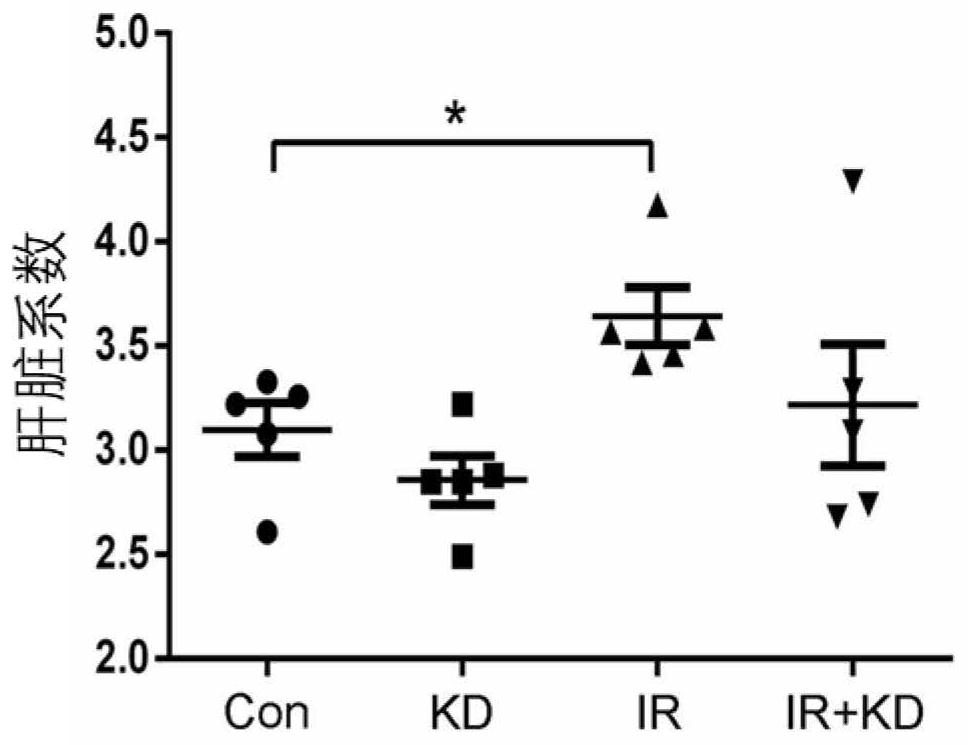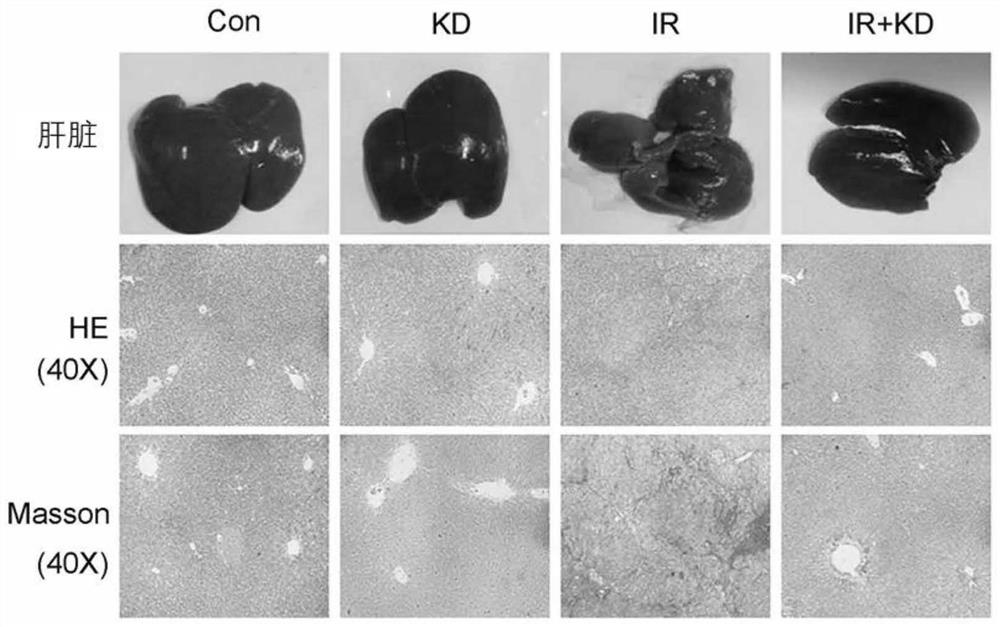Application of kinsenoside in preparation of medicine for treating radiation hepatic fibrosis
A technology of radioactive liver fibrosis and aureoside, applied in the field of medicine, can solve problems such as poor treatment effect, and achieve the effect of inhibiting radioactive liver fibrosis and reducing the degree of fibrosis
- Summary
- Abstract
- Description
- Claims
- Application Information
AI Technical Summary
Problems solved by technology
Method used
Image
Examples
Embodiment 1
[0031] Example 1: Animal level study of auroside intervening radiation-induced liver fibrosis.
[0032] Clematis glucoside powder was provided by the School of Pharmacy, Tongji Medical College, Huazhong University of Science and Technology. Sprague-Dawley rats were randomly divided into 4 groups, normal control group, simple administration group, simple irradiation group and auroside administration group after irradiation. The irradiation group was given a single dose of 30Gy irradiation on the right part of the liver, and the administration group was administered with auroside solution (20mg / kg) once a day for a total of 8 weeks. After 24 weeks of irradiation, liver fibers were compared by HE staining, Masson staining, fibrosis score, collagen immunofluorescence detection, hydroxyproline content determination, α-SMA immunohistochemistry, and histoprotein immunoblotting (Western Blot). degree of transformation. In addition, nude mice were inoculated with liver cancer cells a...
Embodiment 2
[0033] Example 2: Study on cell level of auroside intervening radiation-induced liver fibrosis.
[0034] The HSCs were divided into normal control group, simple administration group, simple irradiation group and auroside administration group after irradiation, and the irradiation group was treated with 6Gy rays. α-SMA is an indicator of hepatic stellate cell activation, which means that radiation exposure causes hepatic stellate cells to be activated at the transcriptional level, while auroside administration after irradiation inhibits the activation of this gene. Compared with the simple irradiation group, α-SMA The expression of SMA mRNA decreased and the difference was statistically significant (P Figure 7 in A). The results of protein immunofluorescence showed that, compared with the simple irradiation group, the expression of α-SMA protein in the auroside administration group after irradiation was significantly reduced ( Figure 7 in B). Using transcriptome high-through...
Embodiment 3
[0035] Example 3: Auroside interferes with radiation-induced liver fibrosis through the TGF-β1 / Smad / CTGF pathway.
[0036] TGF-β1 is a key driving factor of fibrosis, it can finally induce fibrosis through a variety of signaling pathways and a variety of cell interactions, CTGF, as a pro-fibrotic stromal cell protein, is located downstream of it and is responsible for the extracellular The final stage of matrix accumulation. Exogenous transforming growth factor-β1 (TGF-β1) was used to treat HSC cells and detect the expression of fibrosis key proteins. The content of activated TGF-β1 in HSC supernatant was detected by enzyme-linked immunosorbent assay (ELISA). Western blotting was used to analyze the expression of TGF-β1 and its downstream pathway proteins after irradiation. The results showed that exogenous TGF-β1 induced HSC to produce CTGF, and at the same time the expression of α-SMA and collagen increased ( Figure 9 in A). After 6Gy irradiation, the secretion of activ...
PUM
 Login to View More
Login to View More Abstract
Description
Claims
Application Information
 Login to View More
Login to View More - R&D
- Intellectual Property
- Life Sciences
- Materials
- Tech Scout
- Unparalleled Data Quality
- Higher Quality Content
- 60% Fewer Hallucinations
Browse by: Latest US Patents, China's latest patents, Technical Efficacy Thesaurus, Application Domain, Technology Topic, Popular Technical Reports.
© 2025 PatSnap. All rights reserved.Legal|Privacy policy|Modern Slavery Act Transparency Statement|Sitemap|About US| Contact US: help@patsnap.com



